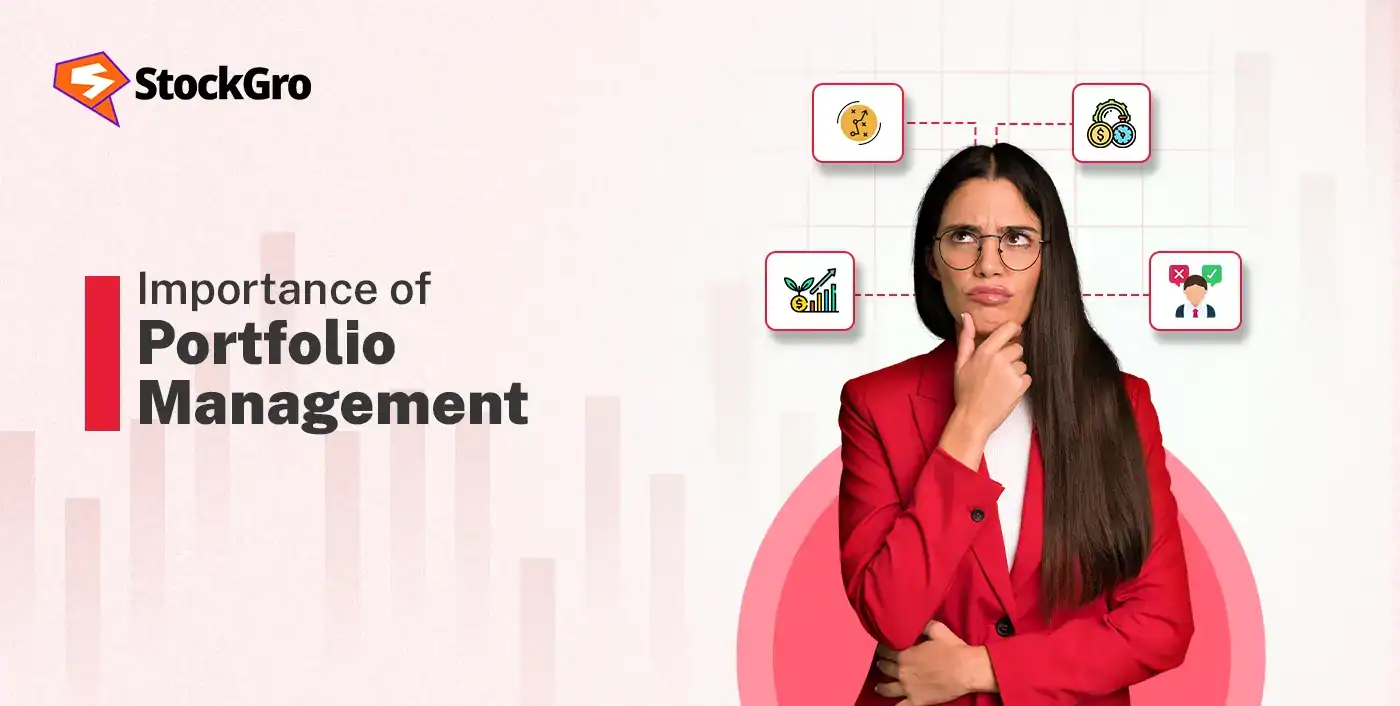
As the festive season dawns across India, the mood board on Dalal Street isn’t at its peak of excitement, but there is some optimism. Analysts note that this calm could be more than a moment of stillness, and it might be building a base for the next rally.
Rather than waiting for fireworks, investors might want to patiently move to start layering investments now, for building a portfolio in this stable phase. That’s exactly where portfolio management becomes not only relevant, but indispensable.
Portfolio management is all about managing a group of investments, such as stocks, bonds, and funds. It is a structured and ongoing process that helps investors to achieve their investment objectives, considering the accepted level of risks.
Read this blog further to know why portfolio management is important, how it works, and the benefits of portfolio management for long-term success.
Importance of Portfolio Management
The importance of portfolio management is based on strategies that work together to manage risks, maximise returns, and maintain performance over the investment period.
1. Diversification & Risk Management
Diversification focuses on spreading the total investment across asset classes to avoid relying on one performer.
As different assets react differently to market events, by not putting all the money into a single stock or sector, an investor prevents the poor performance of one investment from devastating the entire portfolio. A diversified portfolio provides consistent and stable returns over time, while protecting capital from market shocks.
For instance, during market downturns, equities usually fall, while gold acts as a safe option which tends to rise. Meanwhile, bonds, especially government securities, provide smaller yet consistent returns that could help in offsetting loss from stocks.
2. Smart Asset Allocation & Goal Match
Asset allocation aims to distribute investments across different asset classes, like stocks, bonds, and cash equivalents. The mix of assets is based on an investor’s risk tolerance, time horizon, and financial goals.
The need for portfolio management becomes evident here, as asset allocation helps to define financial objectives, whether it’s savings for retirement, a down payment for a house, or a child’s education.
3. Maximising Returns through Rebalancing
Rebalancing restores a portfolio’s assets at regular intervals to bring them back in line with the original target allocation.The movement of the market over time can cause some assets to grow faster than the rest.
Also rebalancing is required because investment goals can change with time. For example, someone who starts investing at the age of 21 may focus more on growth and higher-risk assets like equities. But by the age of 40, their goals might shift more toward stability and capital protection. Rebalancing ensures the portfolio continues to match these changing objectives.
4. Tax Efficiency Strategies
A strategically managed portfolio minimises the impact of taxation on the returns. This could suggest that placing high-income assets like bonds in tax-efficient options, such as Public Provident Fund (PPF) or National Pension System (NPS), could reduce tax burden. This also involves selling underperforming assets at a loss to offset capital gains and reduce tax liability.
5. Liquidity Management
It is important for investors to have sufficient cash or liquid assets when they need them without disrupting any long-term goals. By keeping some highly liquid assets in the portfolio, investors can cover unexpected expenses without needing to sell a long-term investment prematurely.
The significance of portfolio management lies in maintaining the balance of liquid assets, such as money market funds, for shorter-term needs while reserving less liquid assets for long-term goals.
6. Expertise & Discipline
Portfolio management brings in a structured and disciplined framework for investing. When investors work with a professional by complying with a predefined plan, it prevents emotional decisions like panic selling during market downturns.
While portfolios can be managed by the investors themselves, they could still lack time or expertise, which makes professional portfolio management essential.
7. Benchmarking & Performance Tracking
Portfolio management involves regularly measuring the portfolio’s performance against a benchmark, which helps it to stay on track towards the financial goals of the investors.
A benchmark, like the Nifty 50, provides a standard to measure performance. Regular monitoring of performance helps the investors to identify whether the investment strategy or manager is effective or not.
Portfolio management is quite significant for long-term wealth creation that aligns investments with financial goals while managing risk. It helps investors to stay consistent through market ups and downs, make informed decisions, and also provide sustainable growth over time.
Therefore, the key ingredients for financial success are a well-managed portfolio that balances discipline, adaptability, and strategic insights.
FAQs
Portfolio management helps investors to balance risks and rewards, and protect their investments from losses while achieving long-term goals. It provides a structured investment approach and minimises emotional reactions to market volatility.
Investing in different asset classes, sectors, and geographies reduces risks from a single stock or sector. Diversification provides a safety against market swings by leading a more stable long-term wealth journey.
Portfolio management aims to reduce taxes on investment income like dividends, capital gains, and interest by structuring investments in a tax-efficient way and increasing the amount of post-tax returns.
It is suggested to review and rebalance a portfolio once a year to ensure alignment with the target asset allocation. Rebalancing is necessary when market movements cause the portfolio’s allocation to shift.
Liquidity ensures investors have access to sufficient cash for unexpected expenses without having to sell long-term investments at an inopportune time. It allows taking advantage of new investment opportunities as they arise.
Yes, robo-advisors can be effective for providing low-cost, automated portfolio management based on investors’ financial goals and risk tolerance. Platforms like Stoxo offering robo-advisors can assist in the process of diversification and rebalancing, making it easier for investors to maintain an appropriate asset mix.

